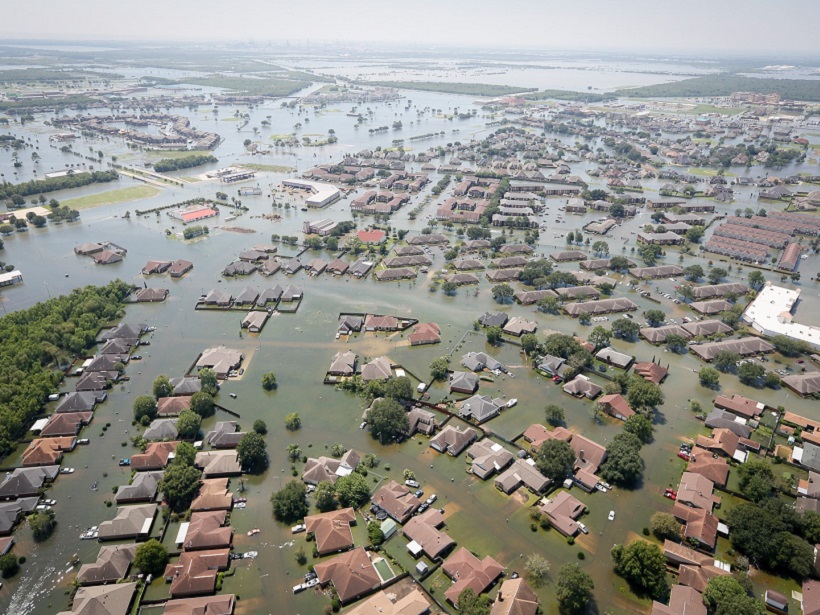The costliest hurricane season in the history of the United States, widespread flooding in Asia, and wildfires and droughts around the world made 2017 the most impacting disaster year so far. Natural hazards are part of our planet’s life cycle but are increasingly resulting in devastating human disasters.
What does it take to prevent natural hazards from becoming human disasters?
The 2010 Haiti Earthquake, 2004 Indian Ocean Tsunami, 2005 Hurricane Katrina, 2011 Tohoku Tsunami, 2017 US hurricanes, 2018 global heatwaves highlight our growing vulnerability to extreme events. The key question is, What does it take to prevent natural hazards from becoming human disasters?
Addressing this question requires a critical look at the societal response to extreme events. A society that experiences frequent earthquakes typically responds by improving regulations and building codes to enhance its resilience against future quakes.
How can the scientific community inform societies about critical thresholds and strengthen their resilience against natural hazards?
However, a moderate event in an unexpected region or unprepared society can also turn into a disaster without proper preparation. Understanding critical thresholds are fundamental to prevent natural hazards from becoming human disasters.
This leads to another important question: How can the scientific community inform societies about critical thresholds and strengthen their resilience against natural hazards?
In the geoscience community, most studies on natural hazards focus on describing and understanding changes to frequency and intensity of extreme events (e.g., floods, earthquakes, heat waves, droughts, surges, wildfires). The engineering community has a long tradition of designing infrastructure based on observed historical extremes, but in many regions the statistics of extremes (mean, frequency, variability) have changed and will continue more so in the future. Thus, any change in the way we prepare our societies and design our built environment would also require support from policy makers. This calls for the geoscience, engineering and policy communities to focus more on the interactions between natural hazards and the built environment and human societies. In the following, we highlight three areas that warrant attention.
Theoretical frameworks for understanding how the interwoven relationship between hazards and the built environment may amplify or suppress likelihood of a human disaster
A false sense of security follows building infrastructure systems to protect us against natural hazards; a notion known as the levee effect [Di Baldassarre et al., 2015; Hutton et al., 2018]. The levee effect indicates how lack of (or infrequent) exposure to hazards increases the societal vulnerability to a major human disaster.
We need integrated research to develop theoretical and empirical frameworks
Given developments around the world and changing characteristics of natural hazards, we need more integrated research to develop theoretical and empirical frameworks for modeling and describing this levee effect, and its potential to amplify the likelihood of human disasters.
Understanding the cumulative cost/impacts of non-extreme events
Low cost and diffuse incidents over time can aggregate into very high cost outcomes [Moftakhari et al., 2017]. While such non-extreme events, such as nuisance flooding, may not lead to human disasters directly, they drain the resources of societies and limits our ability for resilience planning and management. When responding to non-extreme events, acting too soon can waste resources, but acting too late can lead to substantial financial losses. One of the critical decisions for policy-makers and stakeholders are when and where to invest in prevention measures, and how to evaluate the financial return.
We need coordinated research and more systematic data collection and impact assessment frameworks
Unfortunately, our ability to study non-extreme events is limited by lack of data on their impacts/costs, mainly because such events do not receive a great deal of attention. To improve our understanding of non-extreme events and to evaluate when and where to invest in protective measures, we need coordinated research and more systematic data collection and impact assessment frameworks.
Compound events
Most natural hazards are caused by a combination of interacting and inter-related physical processes across multiple spatio-temporal scales. This combination of hazards, processes and drivers leading to substantial impacts defines a compound event [Zscheischler et al., 2018].
Coordinated research for understanding the risk of compound events and their impacts are needed
Most risk assessment frameworks consider one hazard or driver at a time, potentially leading to underestimation of risk, while a combination of multiple non-extreme events can have extreme impacts (e.g., a moderate drought and above average temperatures leading to significant reduction in crop yield). Coordinated research and development for understanding the risk of compound events and their impacts are needed (e.g., Sadegh et al., 2018).
Several key research directions are examined in a thematic set of papers in Earth’s Future, called Avoiding Disasters: Strengthening Societal Resilience to Natural Hazards. Contributions examine floods, crop yields, climate change, water futures, heatwaves, coastal change, fires, extreme weather and more, complementing earlier papers on hazardous conditions that challenge modern human society.
—Amir AghaKouchak (@AmirAghaKouchak), Editor, Earth’s Future and University of California, Irvine; and Ben van der Pluijm (@vdpluijm), Editor-in-Chief, Earth’s Future and University of Michigan, Ann Arbor; email: [email protected]
Citation:
AghaKouchak, A.,van der Pluijm, B. (2018), We can work it out: Avoiding disasters, Eos, 99, https://doi.org/10.1029/2018EO105299. Published on 07 September 2018.
Text © 2018. The authors. CC BY-NC-ND 3.0
Except where otherwise noted, images are subject to copyright. Any reuse without express permission from the copyright owner is prohibited.

